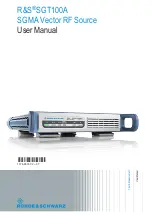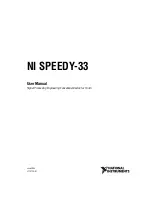
3-2
OPERATION
ORBAN MODEL 9300
Input
meters show the peak input level applied to the 9300’s analog or digital
inputs with reference to 0 = digital full-scale. If the input meter’s red segment
lights up, you are overdriving the 9300’s analog to digital converter, which is a
very common cause of audible distortion.
AGC
meter shows the gain reduction of the slow two-band AGC processing that
precedes the multiband compressor. Full-scale is 25 dB gain reduction. You can
switch the meter so that it either reads the gain reduction of the Master (above-
200 Hz) band, the Bass (below-200 Hz) band, or the difference between the gain
reduction in the Master and Bass bands.
The latter reading is useful for assessing the dynamic bass equalization
that the AGC produces, and it helps you set the
AGC
BASS
COUPLING
control.
Gate
LED indicates gate activity, lighting when the input audio falls below the
threshold set by the AGC gate threshold control (via the Full Control screen’s
AGC
G
ATE
control). When this happens, the AGC’s recovery time is slowed to
prevent noise rush-up during low-level passages.
Gain Reduction
meters show the gain reduction in the multiband compressor.
Full-scale is 25 dB gain reduction.
Output meters
show the instantaneous peak output of the processed audio in
units of percentage modulation. The right-hand meter shows positive peaks and
the left-hand meter shows negative peaks.
Some audio processing concepts
Loudness
and coverage are increased by reducing the peak-to-average ratio of the
audio. If peaks are reduced, the average level can be increased within the permitted
modulation limits. The effectiveness with which this can be accomplished without
introducing objectionable side effects (like clipping distortion) is the single best
measure of audio processing effectiveness.
Density
is the extent to which the short-term RMS amplitude of audio envelope peaks
is made uniform (at the expense of dynamic range). Programs with large amounts of
short-term dynamic range have low density; highly compressed programs have high
density.
Reducing the peak-to-average ratio of the audio increases loudness. If peaks are re-
duced, the average level can be increased within the permitted modulation limits.
The effectiveness with which this can be accomplished without introducing objec-
tionable side effects (such as pumping or intermodulation distortion) is the single
best measure of audio processing effectiveness.
Compression
reduces the difference in level between the soft and loud sounds to
make more efficient use of permitted peak level limits, resulting in a subjective in-
Summary of Contents for OPTIMOD-AM 9300
Page 1: ...Operating Manual OPTIMOD AM 9300 Digital Audio Processor Version 2 0 Software...
Page 7: ...Operating Manual OPTIMOD AM 9300 Digital Audio Processor Version 2 0 Software...
Page 178: ...3 46 OPERATION ORBAN MODEL 9300...
Page 200: ......
Page 221: ...OPTIMOD AM DIGITAL TECHNICAL DATA 6 21...
Page 222: ...6 22 TECHNICAL DATA ORBAN MODEL 9300 CONTROL BOARD PARTS LOCATOR...
Page 228: ...6 28 TECHNICAL DATA ORBAN MODEL 9300...
Page 229: ...OPTIMOD AM DIGITAL TECHNICAL DATA 6 29 I O DSP BOARD LEFT AND RIGHT ANALOG INPUTS...
Page 230: ...6 30 TECHNICAL DATA ORBAN MODEL 9300 I O DSP BOARD ANALOG OUTPUTS...
Page 231: ...OPTIMOD AM DIGITAL TECHNICAL DATA 6 31...
Page 238: ...6 38 TECHNICAL DATA ORBAN MODEL 9300 FRONT VIEW REAR VIEW FRONT PANEL PARTS LOCATOR DIAGRAM...
















































